I struggled to secure a fabric with an invisible hem stitch by hand. Cause the fabric is quite hard, so blind hem isn’t able to hold it together. 😑
My grandma stepped up, seeing my struggle, and she said, ‘normal blind-stitch won’t the work here. You need to do a double blind stitch,’ I said. ‘How do you do that?’
Double Blind
To do a double blind stitch by hand, sew two parallel rows of blind stitches, catching only a few fabric threads with each stitch to create an invisible, secure seam.
Ok, I’m confused; the description won’t do it. Show me.
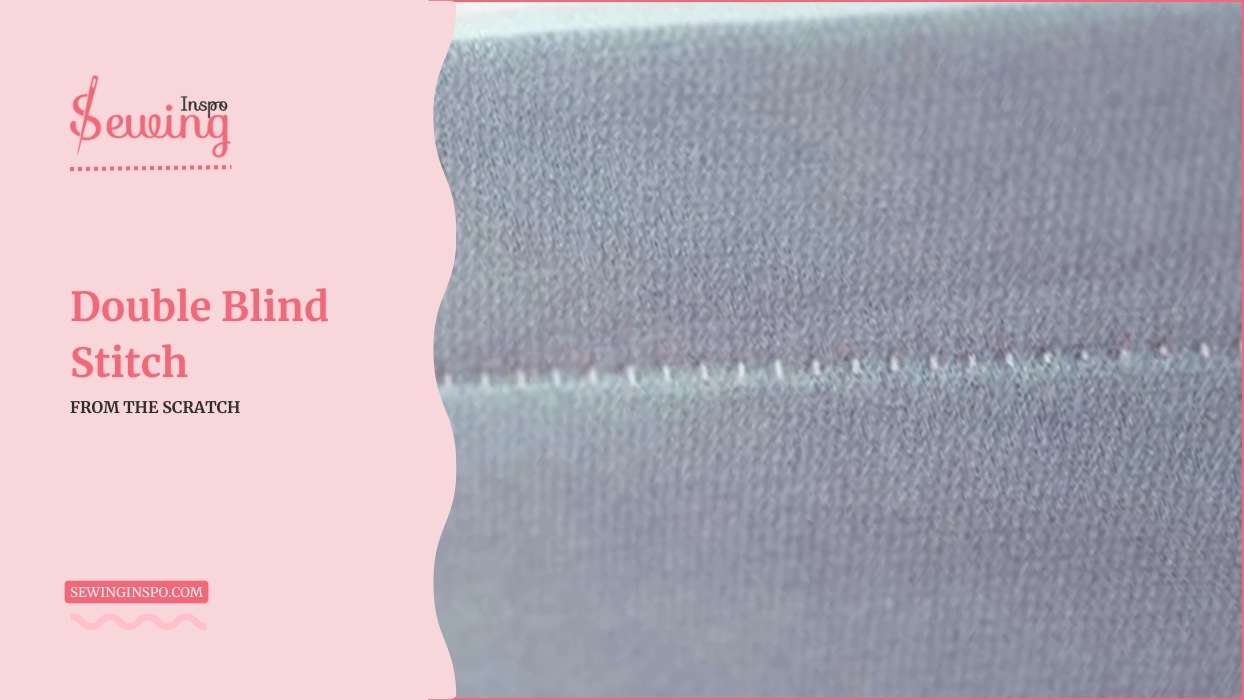
Table of Contents
What Is Double Blind Stitch?
A double-blind stitch uses two lines of thread to make a hidden seam. It’s great for joining two folded edges or stitching up a blind hem without visible stitches.
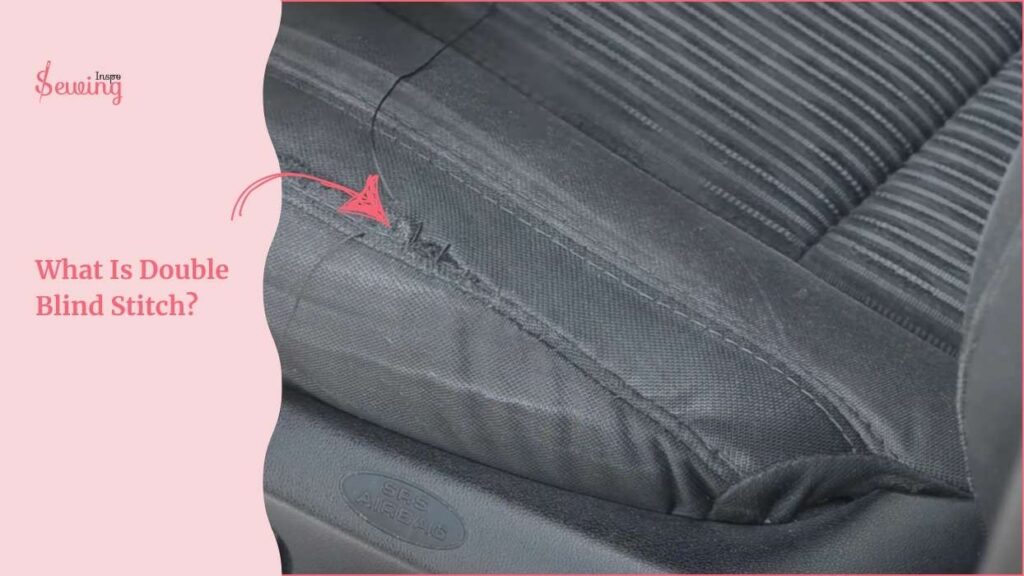
This is one of the common sewing stitches.
Ok, so, how does it differ from a blind stitch?
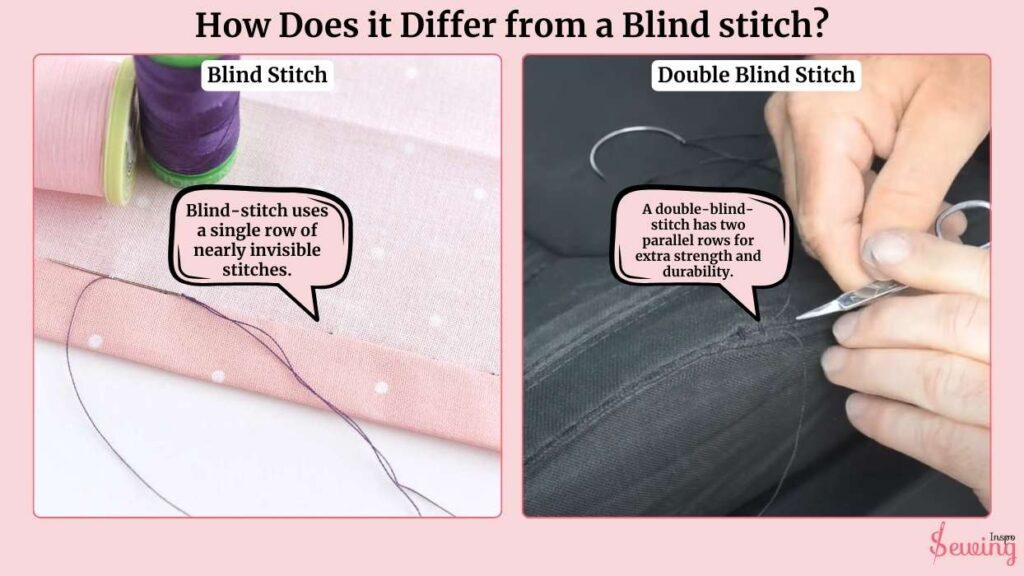
The difference between a blind stitch and a double blind-stitch is that a blind-stitch uses a single row of nearly invisible stitches. In contrast, a double-blind-stitch has two parallel rows for extra strength and durability.
Just like lock stitch and blind stitch differ.
Blind Stitch Diagram
If you are confused between the blind & double one, then here is a diagram of the normal one.

Whats A Double Blind Procedure?
First of all, to do a double blind-stitch, you will need 2 things:

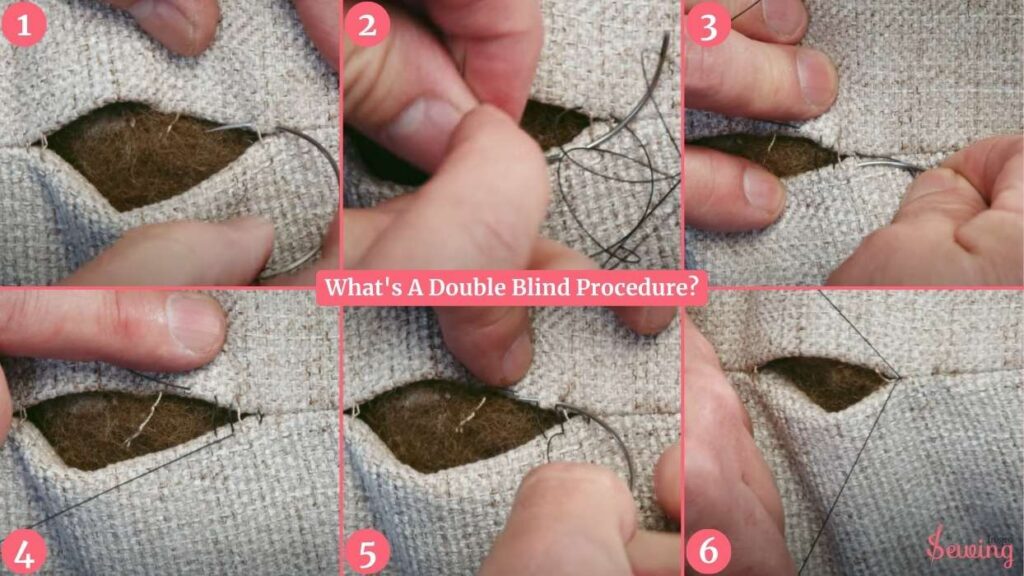
- A 75/11″ to “90/14” curved needle
- monofilament blind stitch thread around a size 8 or 12.
Ok, I got it now. Teach me how to start a hand sewn stitch.
After gathering the tools. Grandma started to show me the process of this stitching types.
Now, thread that needle nice and steady, and let’s start just before the broken seam. Poke the needle in to make a hole one like a little anchor.
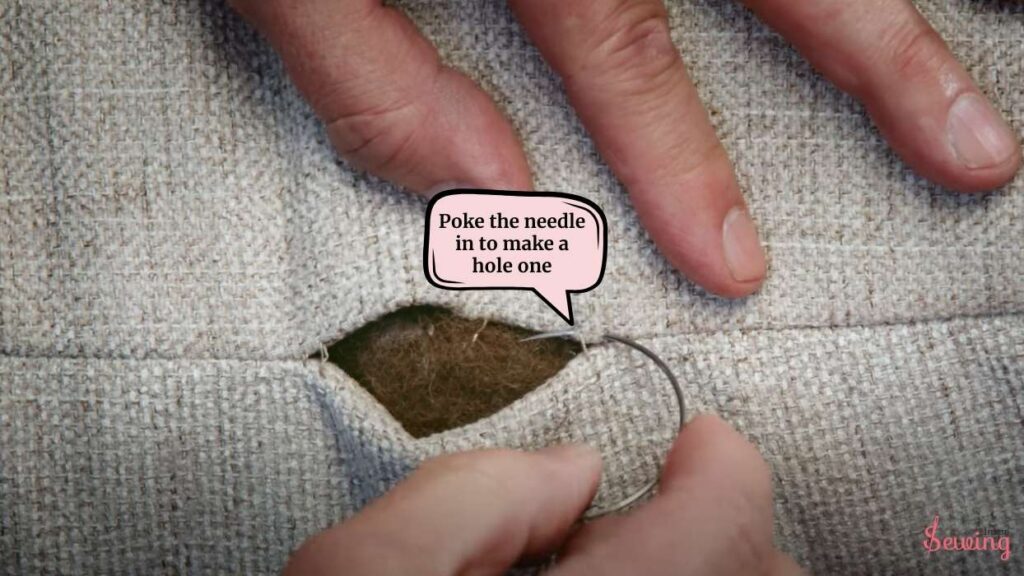
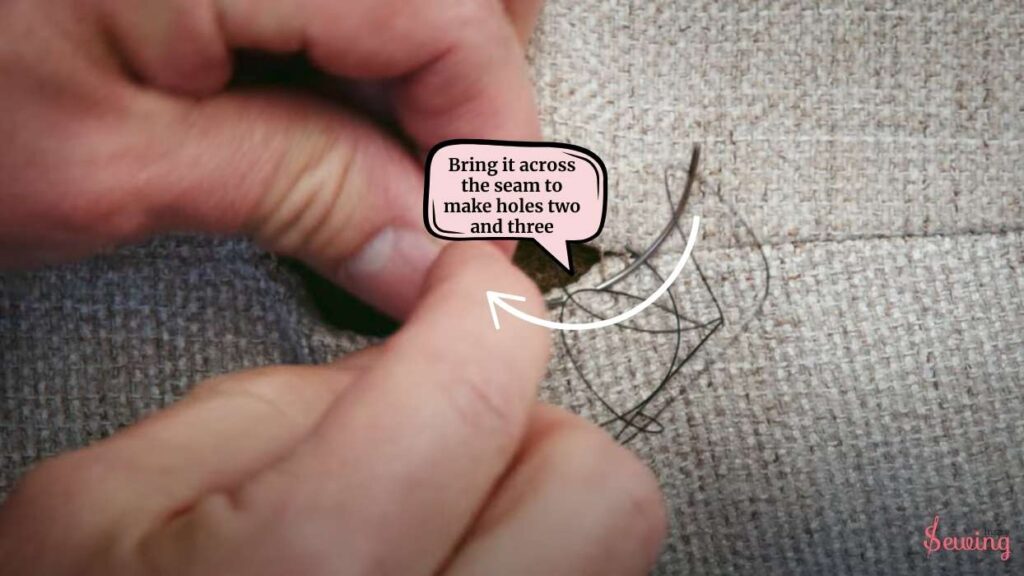
Then, bring it across the seam to make holes two and three. Back and forth I go, like weaving a tiny bridge. Keep your stitches about a ¼ inch apart, nice and even. just like normal stitches.
Here’s the fun part,
Switch the needle to the other end of the thread and do the same thing on the opposite side.
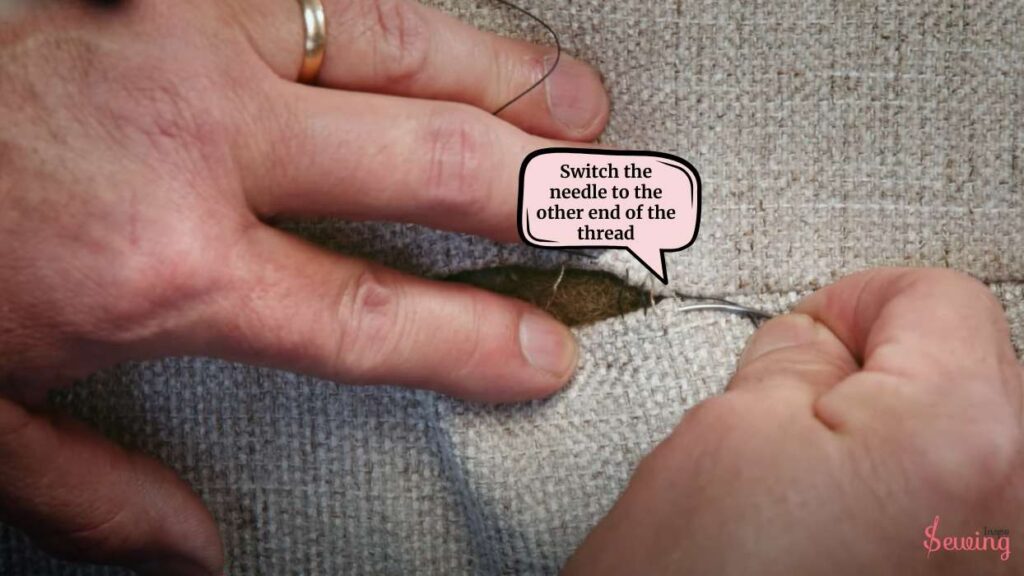
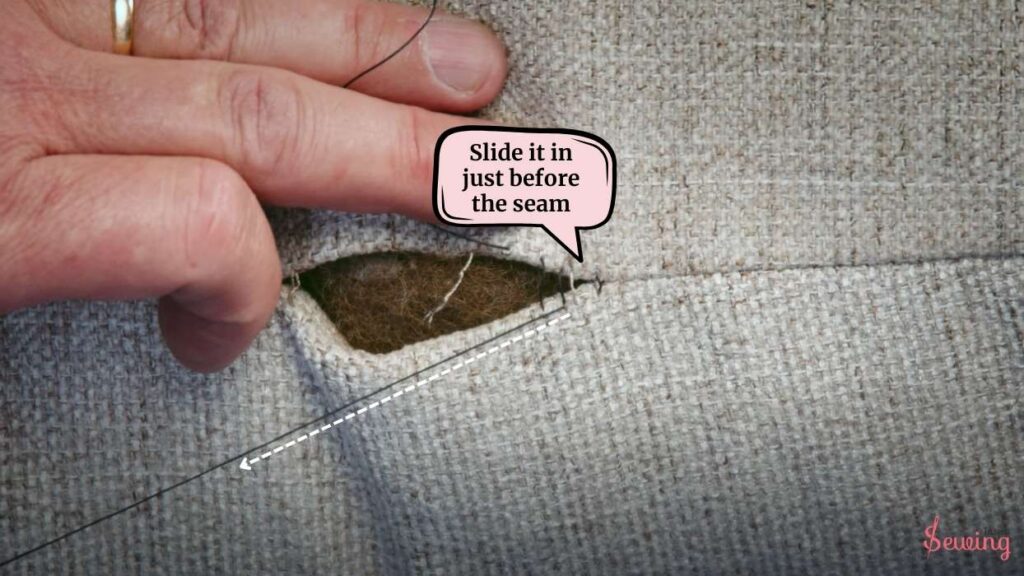
Slide it in just before the seam. Aim to come out of hole 2.
Then, cross over into hole one and out through hole three. Hop across again into hole four, and hole six appears!
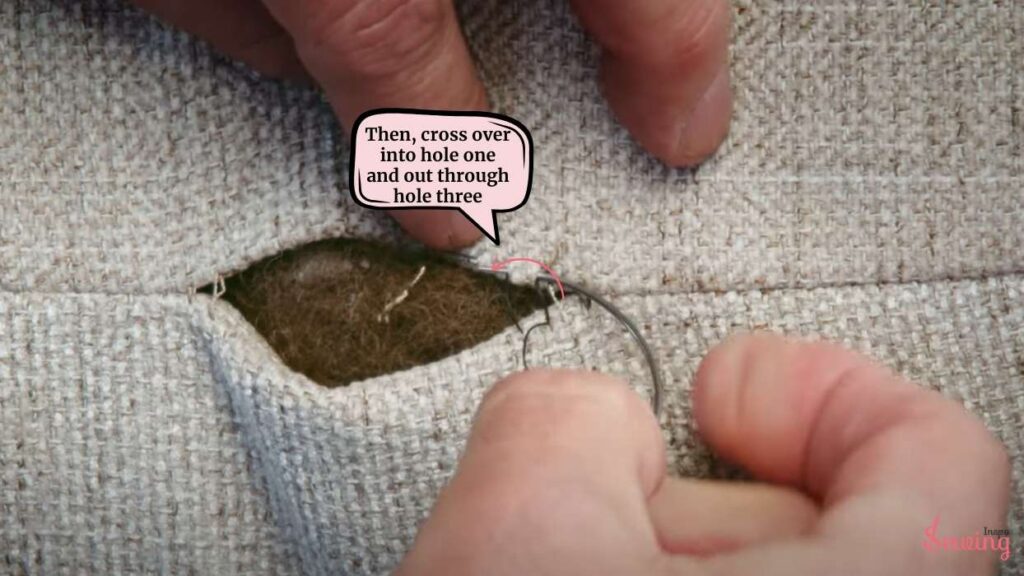
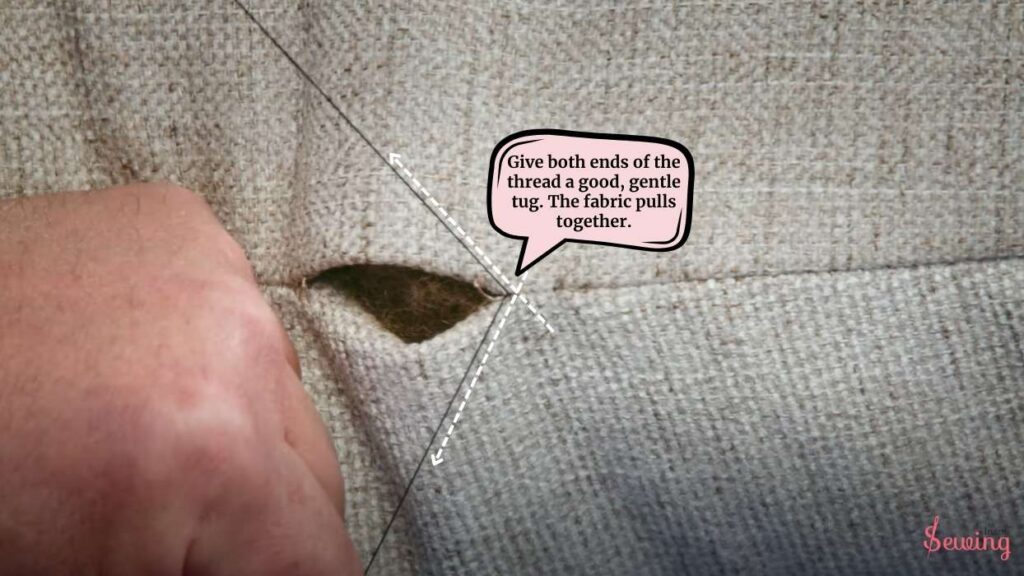
Now, give both ends of the thread a good, gentle tug. The fabric pulls together.
Keep going, repeating the same steps. Always mirroring what you did before. When you get to the end of the seam, tie those two thread ends into a nice, snug knot.
Then, tuck that knot into the fabric with one last sneaky stitch. So it disappears like it was never there.
And that’s it! That’s how you can do double blind stitch by hand. Isn’t it easy to do so?
Double Blind Stitch Diagram
Got your process? If you have any confusion, then this diagram will clear things.

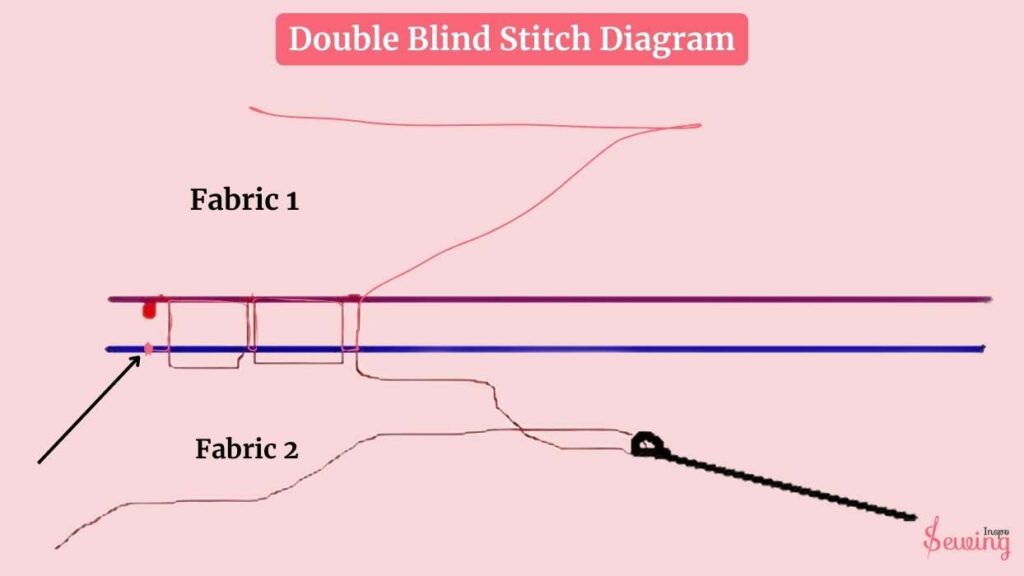
Frequently asked questions
When Should I Use A Double Blind-Stitch?
Use it for hemming, repairing torn seams, or joining fabric edges when you want the stitches to remain invisible stitch finish sewing.
Is A Curved Needle Necessary For A Double Blind-Stitch?
A curved needle makes it easier to sew through layers of fabric, but a straight needle can also work with careful stitching.
It’s Your Turn To Do Double Blind Stitch
After my grandma’s lesson, I went to try it on the fabric edge I was struggling with. And it’s actually securing the edge more strongly than ever.
Did you try it yet? If not, then try it now.
If you did, then share your sewing project with us.

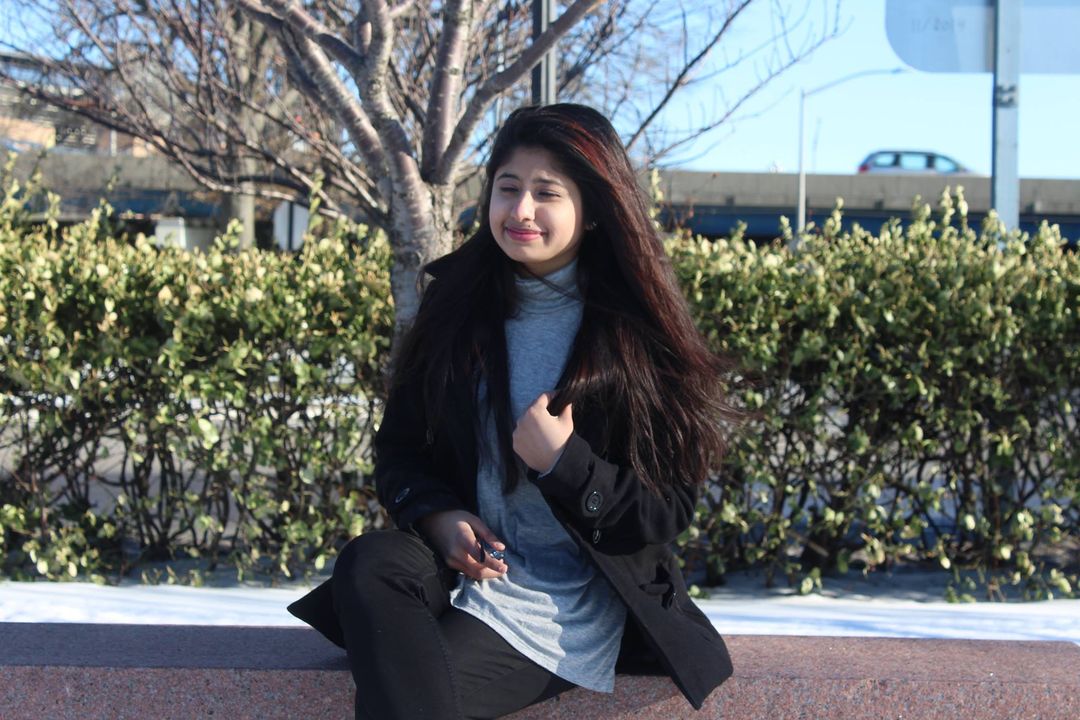
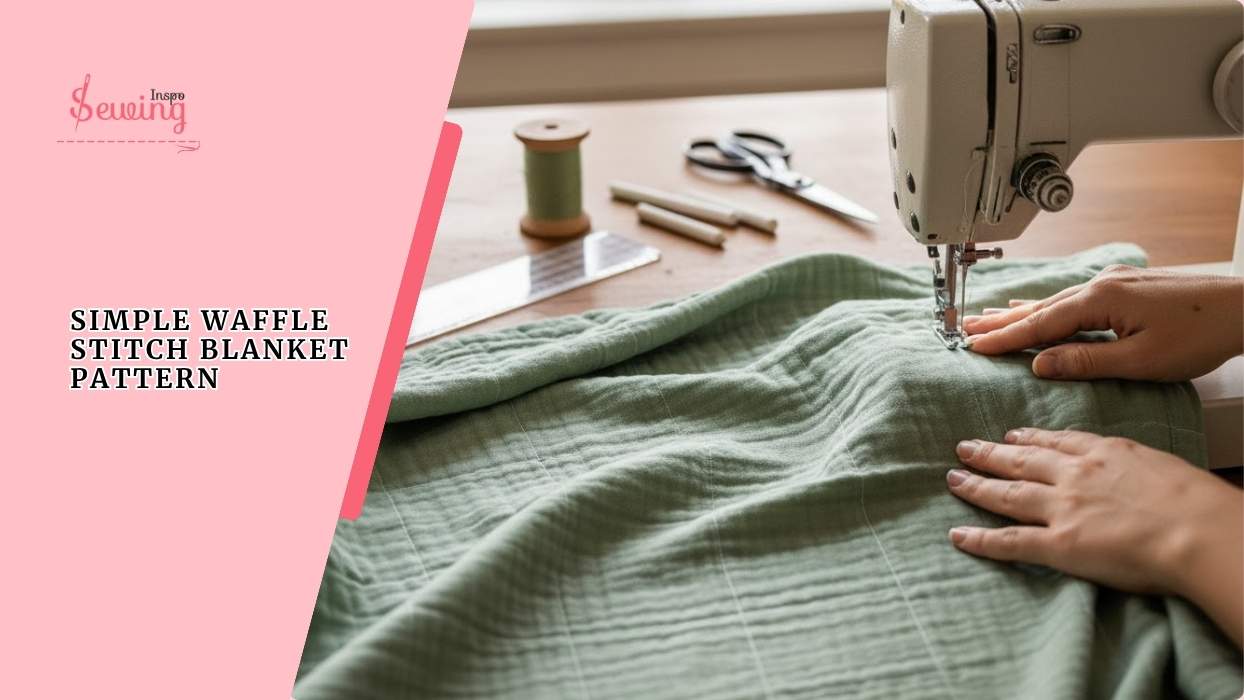
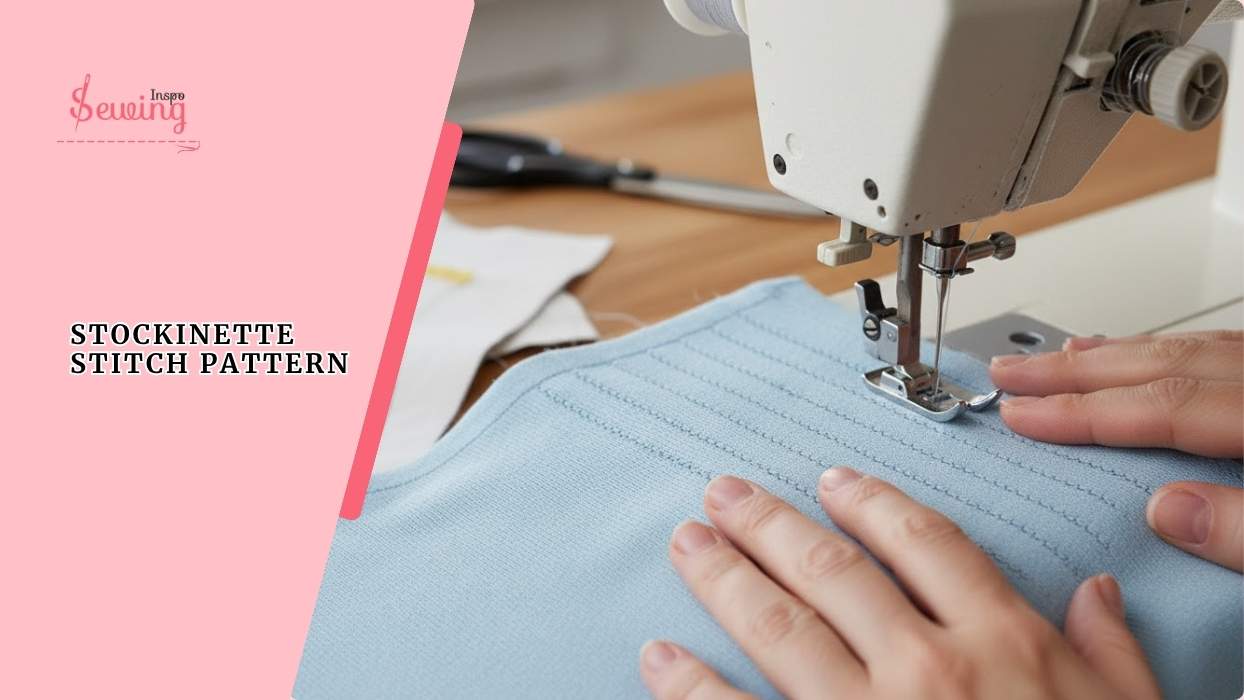
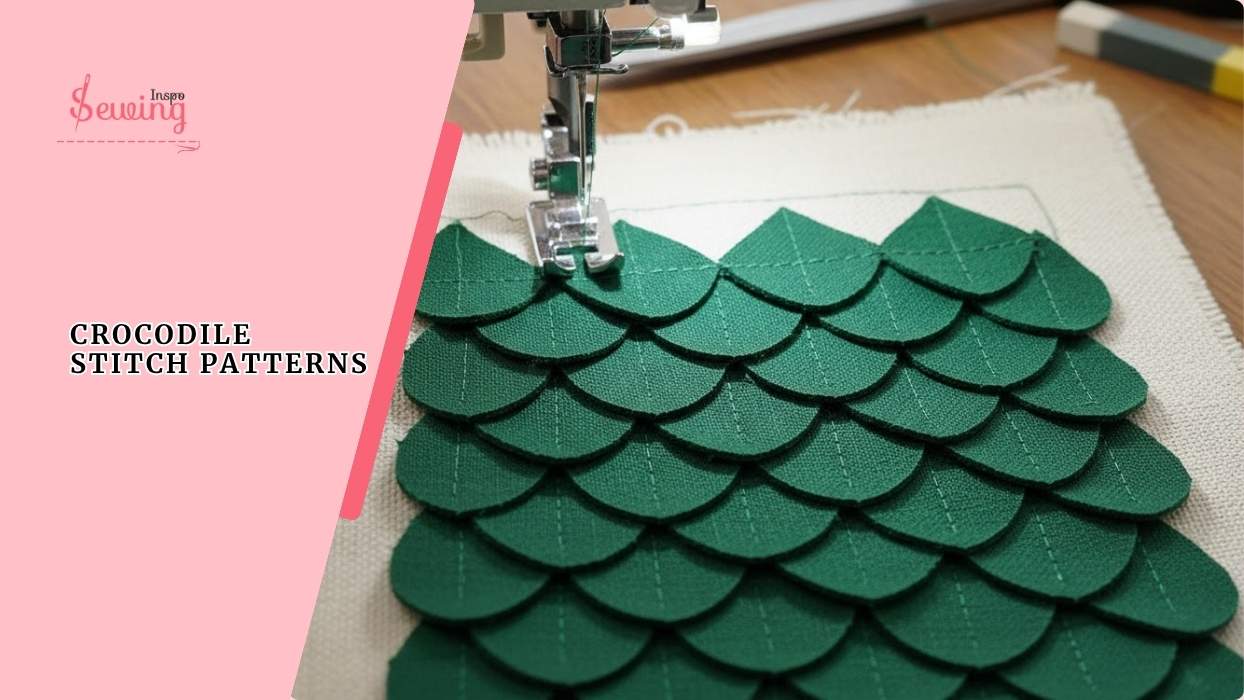
Leave a Reply